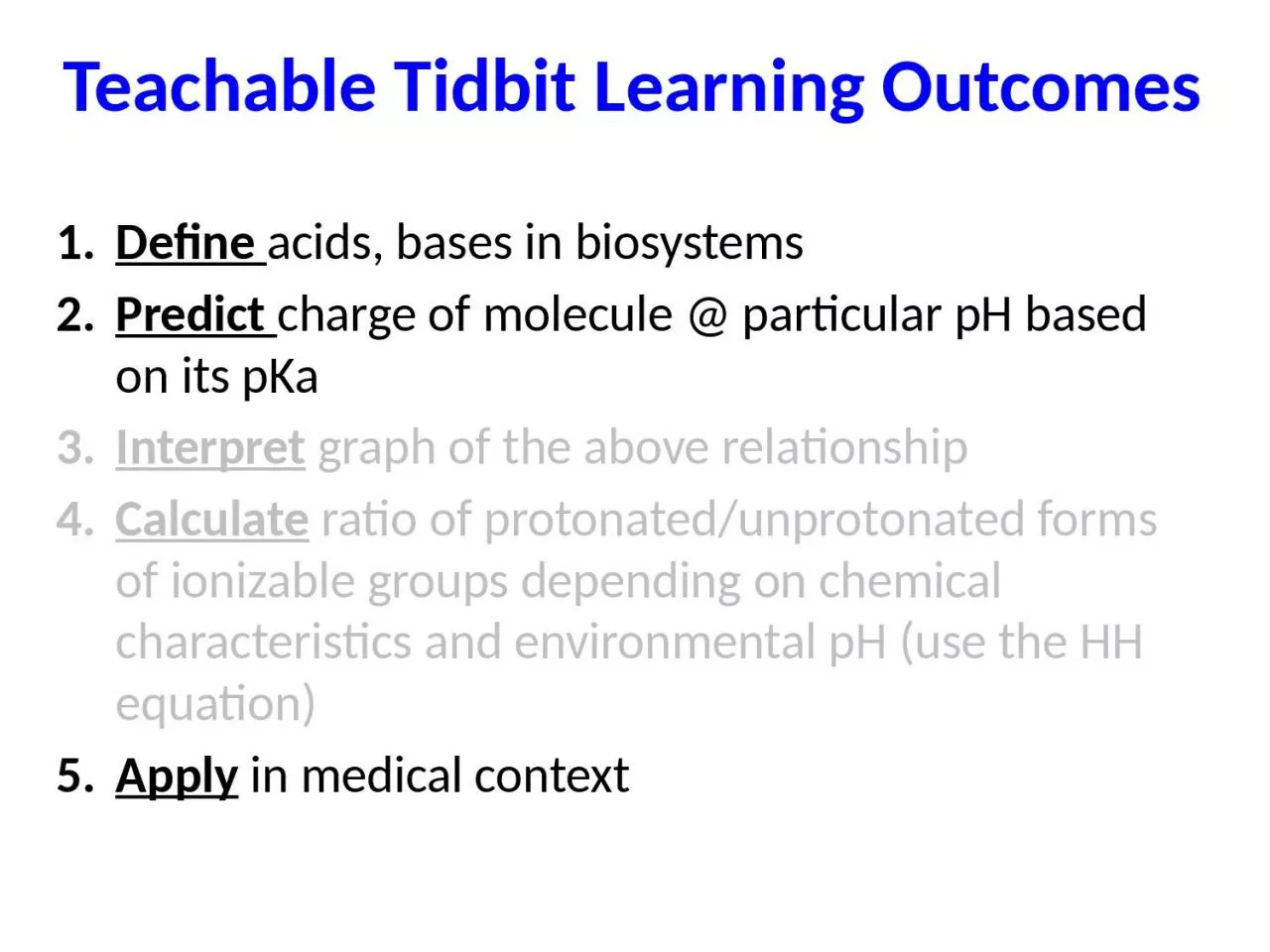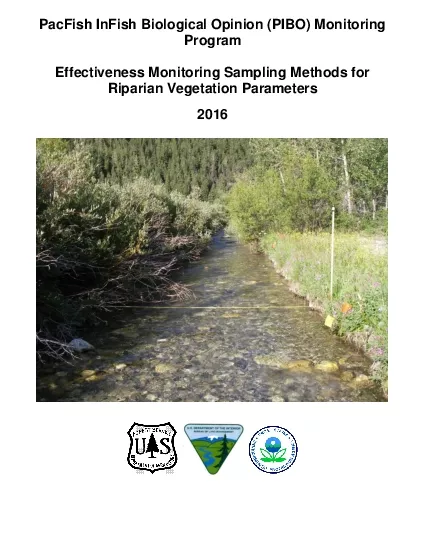PPT-Teachable Tidbit L earning Outcomes
Author : badra | Published Date : 2022-06-28
Define acids bases in biosystems Predict charge of molecule particular pH based on its pKa Interpret graph of the above relationship Calculate ratio of
Presentation Embed Code
Download Presentation
Download Presentation The PPT/PDF document "Teachable Tidbit L earning Outcomes" is the property of its rightful owner. Permission is granted to download and print the materials on this website for personal, non-commercial use only, and to display it on your personal computer provided you do not modify the materials and that you retain all copyright notices contained in the materials. By downloading content from our website, you accept the terms of this agreement.
Teachable Tidbit L earning Outcomes: Transcript
Define acids bases in biosystems Predict charge of molecule particular pH based on its pKa Interpret graph of the above relationship Calculate ratio of protonated unprotonated. NJIT. Bhavani Balasubramanian. Maria Stanko. Ellen Wisner. Brandeis University. Melissa Kosinski-Collins. Jim Morris. Dan Perlman. © Dan Perlman Ecolibrary.org. Context:. Midway through a course in . Get out your clickers. Get out your laptops, . i. -pads, . i. -phones, or other internet connected device. Go to . www.codecarnival.com. Click on the first link. Don’t click any further!!. Natural Selection. Project. By: . Matt. EXPOSITION. RISING ACTION. CLIXMAX. FALLING ACTION. RESOLUTION. He hated his. aunt and uncle.. He ran away.. He meets the . B. eals. and they . become his new family .. He ran away again.. Intersections of Biology and Physics. Group Members: Amy, Erin, Jennifer, Joy, Kathleen, Stephanie, and Sierra (facilitator). Who? 25 biology majors. What? Conceptual Physics course. Where? Midway through course. Constructing Their Own Knowledge to Understand . Mutation. Lauren Schultz, . Trista. . Strauch. , . Tasia. Taxis, . Lindsey . Veautour . Facilitator: John Merrill. Background. Please respond as a student in intro bio. OLAC 2012 . 19 October 2012. Eric Childress. Consulting Project Manager. OCLC Research. Big patterns. Media patterns. 50 years ago. Talk Map. Big Patterns. New companies blend:. retail/advertising. devices/OS. Summer Institute. Bradley Hyman. Amy Prunuske. “One minute essay”. When you decided to enroll in the class, what was your definition of “Scientific Teaching” and how did that definition change after doing your reading assignment?. SLO Proficient (UCAP) Developing 2 (DSEM) Developing 1 (USEM) Benchmark (FSEM) ACADEMIC INQUIRY. Student will be able to contribute insightful ideas that answer a question or solve a problem relevant Participants: Facilitator:. Virginia . Carson Chris . Tubbs. Charlie Janson. Devon Quick. John Reiss. Melissa Rowland-Goldsmith. Mark Wilson . Learning goals. Students will understand characteristics of evidence in science. Our Teachable Tidbit Topic: . Exponential growth and decay with applications to biology. Learning Outcomes . F. rom . T. idbit:. The . student should be able . to:. Fit . an exponential model to . data. D. ocumentation. Dr. David L. Batie, NCARB, RA . ● . East Carolina University . ● . July 26, 2017. Presentation Outline. How to Assess. Where to Assess. When to Assess. What to do with the Assessment. PProgramEffectiveness Monitoring Sampling Methods for Riparian Vegetation Parameters2016iEffectiveness Monitoring Sampling Methods for Riparian Vegetation ParametersBYPACFISH/INFISH Biological Opinion After 25 years this classic best-seller is still the resource for anyone looking to earn a degree in a nontraditional way. The completely revised and updated 14th edition comes bigger and better than ever, with more detailed information on over 2,500 schools, expanded coverage of research doctorates, and 400 brand new listings of distance learning programs. After 25 years this classic best-seller is still the resource for anyone looking to earn a degree in a nontraditional way. The completely revised and updated 14th edition comes bigger and better than ever, with more detailed information on over 2,500 schools, expanded coverage of research doctorates, and 400 brand new listings of distance-learning programs.
Download Document
Here is the link to download the presentation.
"Teachable Tidbit L earning Outcomes"The content belongs to its owner. You may download and print it for personal use, without modification, and keep all copyright notices. By downloading, you agree to these terms.
Related Documents













![[EPUB] - Bears\' Guide to Earning Degrees Nontraditionally (Bear\'s Guide to Earning](https://thumbs.docslides.com/902410/epub-bears-guide-to-earning-degrees-nontraditionally-bear-s-guide-to-earning-degrees-by-distance-learning.jpg)
![[EPUB] - Bears\' Guide to Earning Degrees by Distance Learning (Bear\'s Guide to Earning](https://thumbs.docslides.com/906376/epub-bears-guide-to-earning-degrees-by-distance-learning-bear-s-guide-to-earning-degrees-nontraditionally.jpg)